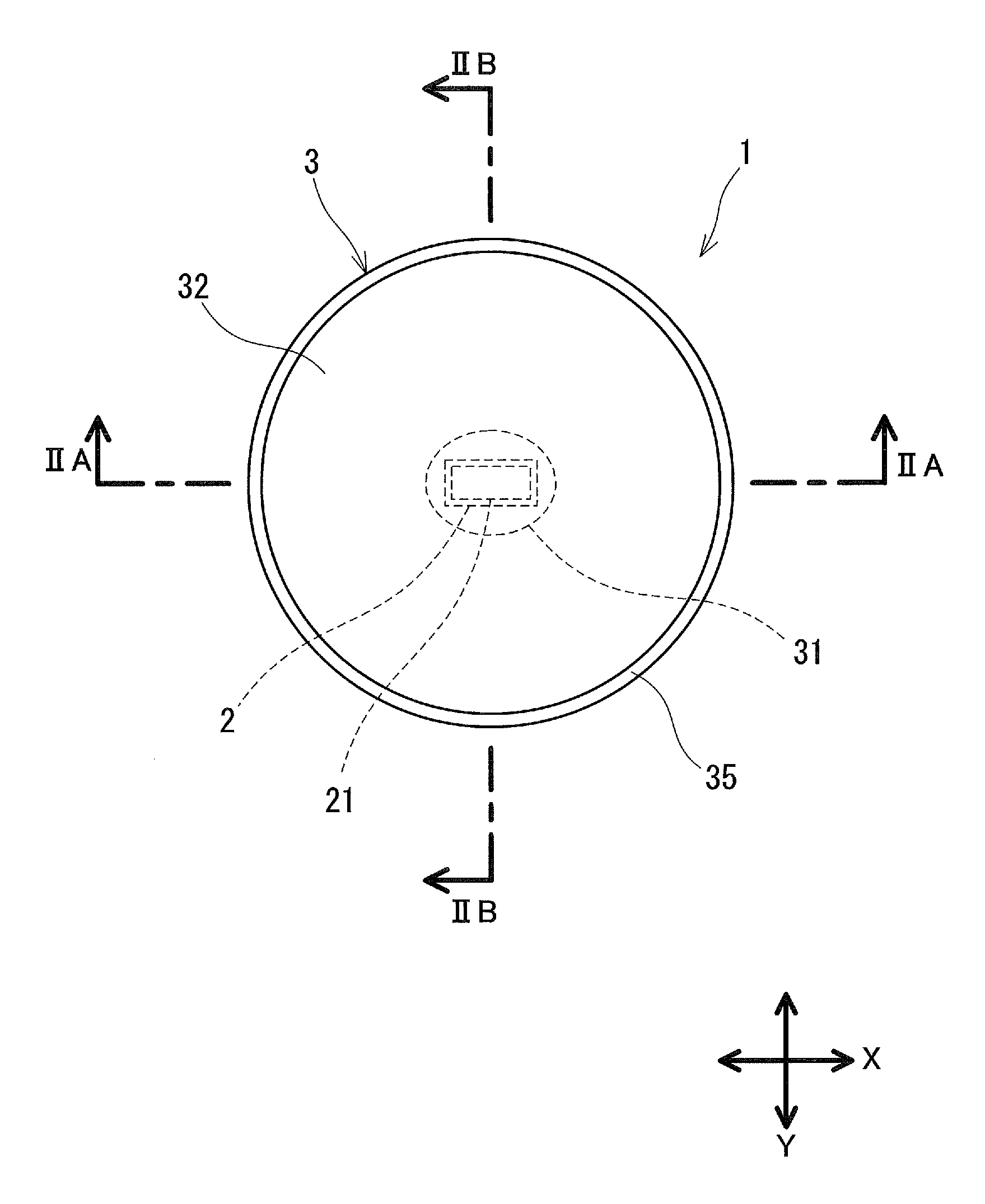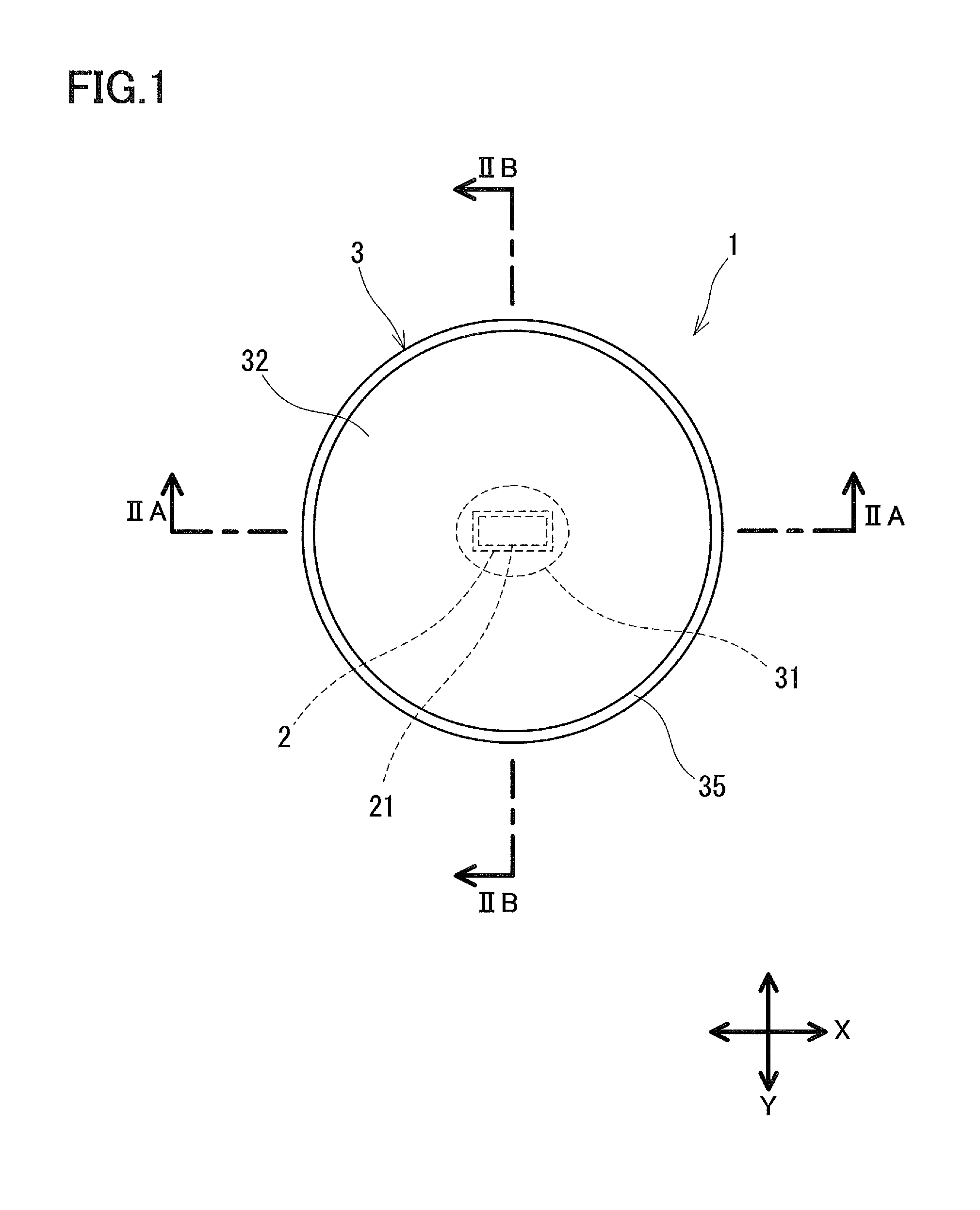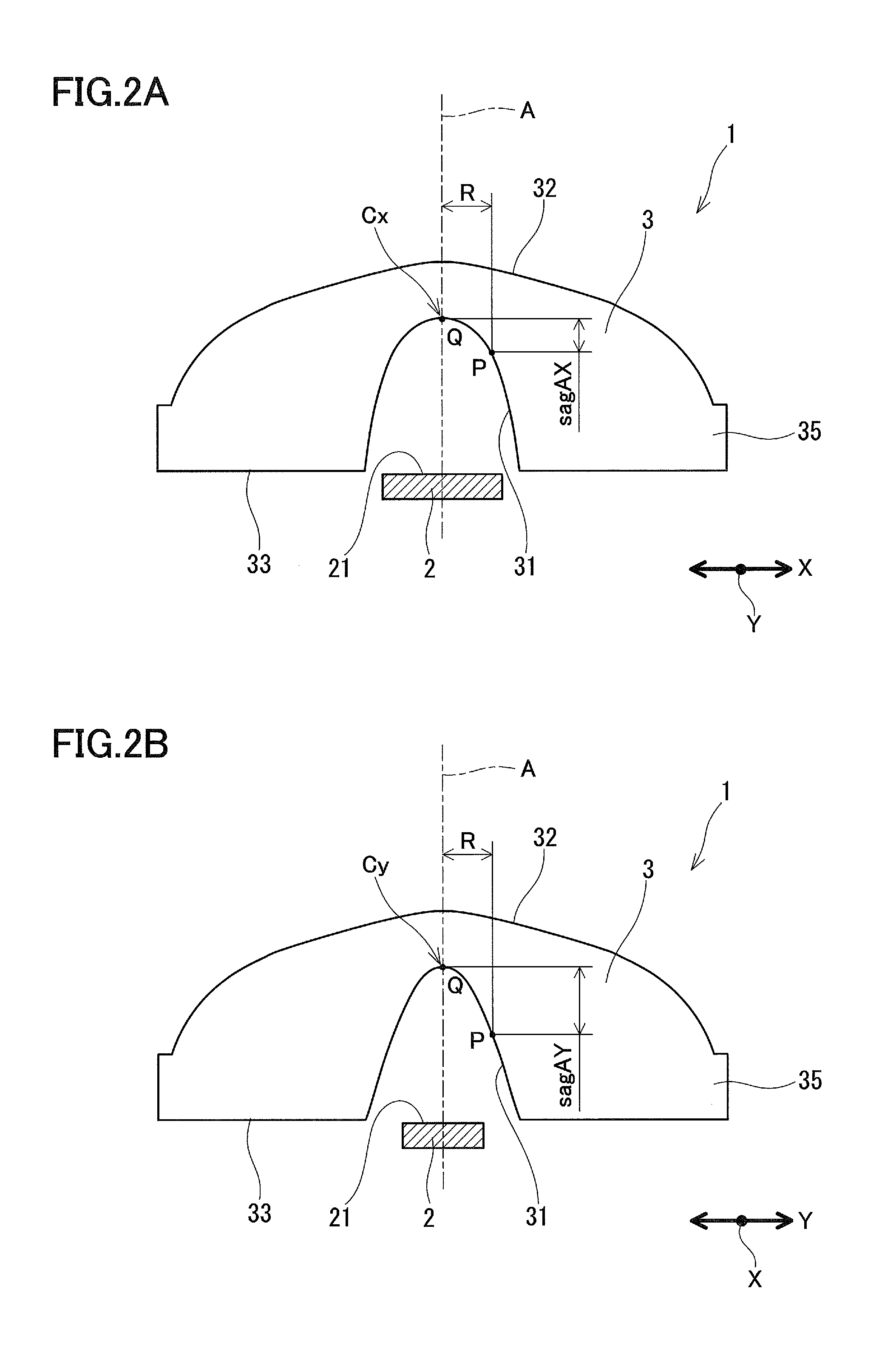Light emitting device, surface light source, and liquid crystal display apparatus
a technology of liquid crystal display and light source, which is applied in the direction of luminescence, lighting and heating apparatus, instruments, etc., can solve the problems of difficult cost reduction, and achieve the effect of reducing the anisotropy of light from the light sour
- Summary
- Abstract
- Description
- Claims
- Application Information
AI Technical Summary
Benefits of technology
Problems solved by technology
Method used
Image
Examples
embodiment 1
[0047]FIG. 1, and FIGS. 2A and 2B each show a light emitting device 1 according to Embodiment 1 of the present invention. The light emitting device 1, for example, is configured to radiate light onto the illumination target surface in a substantially circular manner, with an optical axis A being at the center, and is provided with a light source 2, and a lens 3 that expands the light from the light source 2 radially. That is, the directionality of the light from the light source 2 is widened by the lens 3, thereby allowing a wide range of the illumination target surface to be illuminated, with the optical axis A being at the center. The illuminance distribution on the illumination target surface reaches its peak on the optical axis A, and almost monotonically decreases toward the circumference.
[0048]The light source 2 has a light emitting surface 21 extending in a first direction orthogonal to the optical axis A. Thus, the light source 2 radiates anisotropic light. In this descripti...
modified example
[0064]The light exit surface 32 that is rotationally symmetric with respect to the optical axis A is not necessarily convex over the entire area. For example, it may have a portion with a concave surface in the vicinity of the optical axis and a portion with a convex surface in the circumference thereof. Alternatively, the light exit surface 32 may have a portion with a flat surface in the vicinity of the optical axis.
[0065]In this embodiment, only the light entrance surface 31 includes an anamorphic aspherical curved surface. However, in order to obtain a lens having a greater refractive power in the Y direction than in the X direction, at least one of the light entrance surface 31 and the light exit surface 32 should include an anamorphic aspherical curved surface.
[0066]For example, as shown in FIG. 5A, a configuration in which the light entrance surface 31 is a continuous concave surface that is rotationally symmetric with respect to the optical axis A, and the light exit surface...
example 1
[0072]Example 1 is a design example intended to widen the directionality of the light from the light source 2 by employing, as the light source 2, a general-purpose LED in which the light emitting surface 21 has a length of 2.60 mm in the X direction and a width of 1.00 mm in the Y direction. In Example 1, the lens 3 has an effective diameter of 15 mm. Table 1 shows specific numerical values for Example 1.
TABLE 1RsagAX (mm)RsagAY (mm)RsagB (mm)0.000.0000.000.0000.000.0000.05−0.0020.05−0.0030.100.0000.10−0.0100.10−0.0130.20−0.0020.15−0.0220.15−0.0300.30−0.0060.20−0.0400.20−0.0540.40−0.0130.25−0.0620.25−0.0840.50−0.0230.30−0.0900.30−0.1200.60−0.0370.35−0.1220.35−0.1640.70−0.0530.40−0.1590.40−0.2140.80−0.0720.45−0.2010.45−0.2700.90−0.0930.50−0.2480.50−0.3331.00−0.1160.55−0.3000.55−0.4021.10−0.1410.60−0.3570.60−0.4781.20−0.1660.65−0.4180.65−0.5601.30−0.1930.70−0.4850.70−0.6481.40−0.2190.75−0.5560.75−0.7431.50−0.2460.80−0.6320.80−0.8431.60−0.2730.85−0.7120.85−0.9501.70−0.3000.90−0.7970.9...
PUM
 Login to View More
Login to View More Abstract
Description
Claims
Application Information
 Login to View More
Login to View More - R&D
- Intellectual Property
- Life Sciences
- Materials
- Tech Scout
- Unparalleled Data Quality
- Higher Quality Content
- 60% Fewer Hallucinations
Browse by: Latest US Patents, China's latest patents, Technical Efficacy Thesaurus, Application Domain, Technology Topic, Popular Technical Reports.
© 2025 PatSnap. All rights reserved.Legal|Privacy policy|Modern Slavery Act Transparency Statement|Sitemap|About US| Contact US: help@patsnap.com



